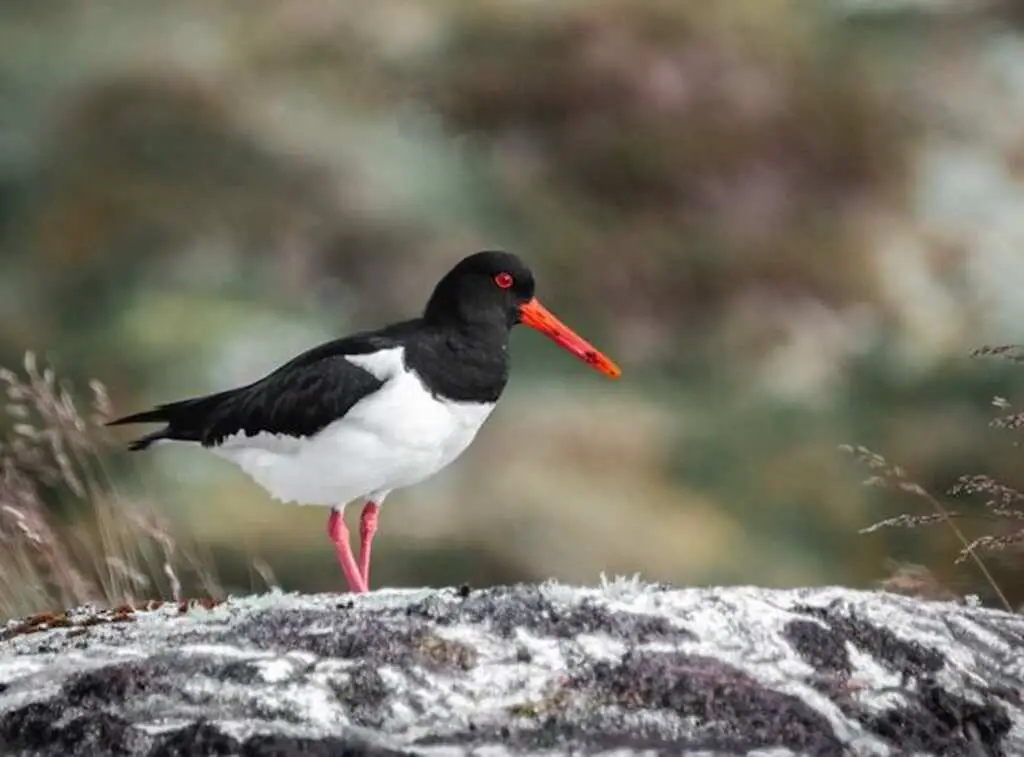Why do some birds have red eyes? It’s a question that has intrigued bird enthusiasts for ages. In this fascinating article, we’ll uncover the mystery behind those captivating crimson peepers.
From evolutionary adaptations to stunning visual displays, get ready to dive into the vibrant world of avian eye color. Let’s unravel the secrets together!
Table of Contents
- 1 Exploring Factors for Red Eyes Development
- 2 Overview
- 3 Melanin and Eyes
- 4 Blood Vessels and Eyes
- 5 Light Reflection and Eyes
- 6 Rays Reflection and Eyes
- 7 Factors Affecting Eye Color
- 8 Remedial Measures for Red Eyes
- 9 Birds with Naturally Red Eyes
- 10 Significance of Red Eyes in Birds
- 11 Frequently Asked Questions
- 11.1 Can red-eyed birds see better in the dark?
- 11.2 Do all birds with red eyes have the same shade of red?
- 11.3 Are there any negative health effects associated with having red eyes in birds?
- 11.4 Can a bird’s diet affect the color of its eyes?
- 11.5 Is it possible for a bird’s eye color to change over time?
- 12 Conclusion
- 13 Author
Exploring Factors for Red Eyes Development
Understanding the factors that contribute to the development of red eyes in birds can provide valuable insights into the evolutionary and ecological significance of this trait.
There are several factors that can contribute to the development of red eyes in birds.
These include the presence of melanin in the eyes, the density and distribution of blood vessels, the reflection of light, and the reflection of UV rays.
By examining each of these factors in detail, we can gain a deeper understanding of the mechanisms that shape the development of red eyes in birds.
Additionally, we can explore the different species of birds that exhibit this trait, as well as the potential significance of red eyes in terms of bird behavior and ecology.
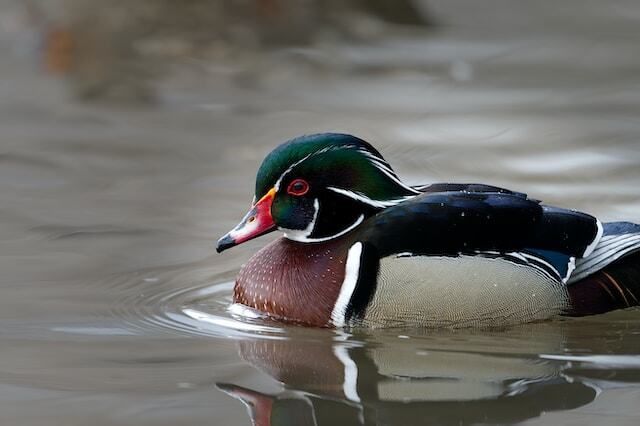
Overview
This section provides an overview of the causes, genetics, and evolutionary advantage of red eyes in certain bird species.
The presence of red eyes in birds is primarily due to the abundance of blood vessels and the reflection of light off the retina.
The color of the eyes is also influenced by the amount of melanin pigment, which absorbs light and gives color to the iris.
Some birds with red eyes have less melanin pigment in their eyes, resulting in a more transparent, red-colored iris.
Genetics also play a significant role in determining eye color in birds.
Bird species that have a genetic mutation resulting in less melanin pigment production will have red or pink eyes instead of the typical black or brown.
Evolutionary advantage may also be a factor in the development of red eyes in certain bird species.
For example, birds that live in low-light environments may have red eyes as a way to enhance their vision in dim light conditions.
This is because red light is not absorbed by the retina as readily as other colors, allowing birds to see better in low light.
The next section will delve into the role of melanin pigment in determining eye color in birds.
Melanin and Eyes
The presence or absence of melanin pigment in the iris and surrounding tissues of avian eyes, as well as the density of blood vessels, plays a crucial role in determining the coloration and reflectivity of light that gives rise to the distinctive red hue observed in certain bird species.
Eye color genetics, which is a complex interplay of multiple genes, influences the amount of melanin produced in the iris. The more melanin produced, the darker the iris coloration. Conversely, less melanin results in lighter coloration.
The evolutionary advantage of red eyes in birds is still debated, but it is hypothesized that the bright red coloration could function as a signal of good health and sexual maturity to potential mates, or as a warning coloration to deter predators.
Environmental factors, such as diet and exposure to ultraviolet (UV) light, can also influence the amount of melanin produced in the iris.
For example, birds that consume more pigmented foods may have darker iris coloration due to increased melanin production.
UV light exposure can also stimulate melanin production, resulting in darker iris coloration.
However, excessive UV exposure can be detrimental to eye health, causing cataracts and other eye disorders.
Therefore, birds have evolved mechanisms to regulate UV light exposure, such as the presence of carotenoid pigments in the eye tissues that absorb excess UV light.
Table: Birds and Melanin
| Melanin Levels | Eye Color | Examples |
|---|---|---|
| High | Dark brown or black | Crow, Raven, Blackbird |
| Medium | Brown or amber | Sparrow, Robin, Pigeon |
| Low | Light or pale | Seagull, Dove, Owl |
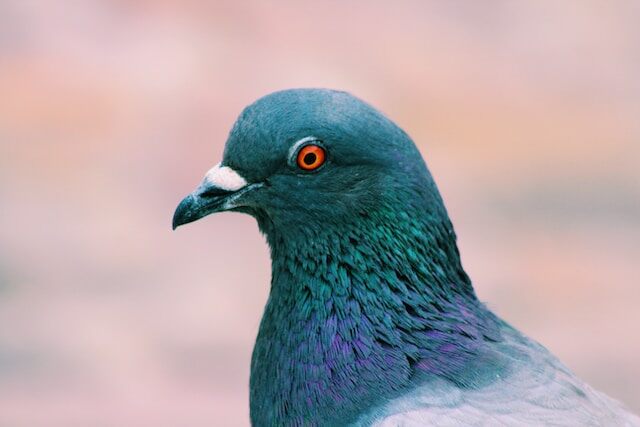
Blood Vessels and Eyes
The density of blood vessels in avian eyes is a key factor in determining the reflectivity of light that results in the distinctive red hue observed in certain bird species.
Due to the high concentration of blood vessels in the retina of the eye, the color of the blood in these vessels can create a red tint when light is reflected off of them.
This phenomenon is similar to the red-eye syndrome observed in humans in flash photography.
However, the red coloration in bird eyes is not solely attributed to blood vessels, as nutrition also plays a significant role.
The presence of carotenoids, a type of pigment found in many fruits and vegetables, can affect the color of the eyes in some bird species. A lack of these pigments in a bird’s diet could result in a paler eye color.
Eye color genetics in animals are complex, and the mechanisms behind red-eye coloration in birds are still not fully understood.
However, it has been observed that some bird species have a higher density of blood vessels in their eyes than others, leading to a more pronounced red coloration.
Additionally, birds that are active during the day, such as eagles and hawks, tend to have more blood vessels in their eyes than nocturnal birds, such as owls.
This may be due to the need for increased visual acuity during daylight hours.
The next subsection will explore how light reflection and other external factors can also affect bird eye color.
Table: Blood Vessels and Eye Color in Birds
| Blood Vessel Networks | Eye Color | Examples |
|---|---|---|
| Rich | Red or pink | Flamingo, Albatross, Hawk |
| Moderate | Yellow or orange | Eagle, Falcon, Parrot |
| Sparse | Other colors | Blue Jay, Cardinal, Toucan |
Light Reflection and Eyes
Light reflection plays a crucial role in avian eye color, with studies showing that up to 70% of light reflected from a bird’s eye can affect its coloration, highlighting the importance of external factors in determining eye color.
Color perception in birds is dependent on the structure of the eye, the presence of different pigments, and the angle and intensity of light.
The evolutionary adaptation of birds to their environment has led to variations in eye color, with some species having red eyes as a means of camouflage or signaling.
For instance, birds that feed at night or in dimly lit environments often have larger eyes with more photoreceptor cells to capture more light, which leads to larger pupils and a greater degree of reflection, resulting in red or orange eye coloration.
Environmental factors such as diet, habitat, and exposure to UV light can also influence eye color in birds.
The presence of carotenoid pigments in the diet, for example, can lead to yellow or red eye coloration in some species.
Additionally, exposure to UV light can trigger the production of melanin pigments in the eye, resulting in darker eye color.
Understanding the role of light reflection and environmental factors in avian eye coloration is essential for researchers studying bird behavior and ecology.
Rays reflection and eyes are also crucial in determining the coloration of bird eyes.
As light enters the eye, it is refracted and reflected by various structures, including the cornea, lens, and retina.
The angle at which light enters the eye and the way it is reflected by these structures can affect the color of the iris.
For instance, light that enters the eye at a steep angle can be reflected back out, resulting in a brighter, more reflective eye color.
The presence of iridophores – cells that contain reflective structures – can also enhance the reflective properties of the eye, resulting in a more vibrant eye color.
Understanding the complex interplay between light reflection and rays reflection in avian eye coloration is crucial for researchers seeking to understand the full range of factors that influence bird eye color.
Table: Light Reflection and Eye Color in Birds
| Light Reflection | Eye Color | Examples |
|---|---|---|
| Absorbed | Dark or black | Crow, Raven, Night Heron |
| Reflected | Bright or vibrant | Macaw, Parakeet, Hummingbird |
| Scatter Reflection | Shimmering or iridescent | Peacock, Kingfisher, Magpie |
| Selective Reflection | Color-changing or mixed | Wood Duck, Pheasant, Starling |
| Absence of Reflection | Transparent or clear | Bald Eagle, Vulture, Crane |
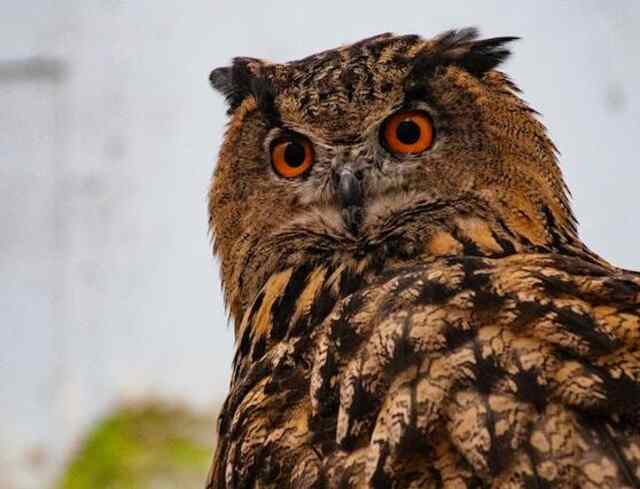
Rays Reflection and Eyes
Understanding the interplay between rays reflection and the eye’s structure is crucial in determining the vibrancy and coloration of avian eyes.
The colors of avian eyes are produced by the reflection and absorption of light within the eye’s structure.
Rays and vision are closely related, and the way light interacts with the eye can affect the perception of color.
The cornea, lens, and retina are all important parts of the eye that contribute to the reflection and perception of light.
The cornea and lens serve as barriers that filter out certain wavelengths of light, while the retina contains photoreceptor cells that detect the different wavelengths of light and send signals to the brain to produce color perception.
The reflection of light within the eye can be affected by many factors, including the pigments present in the eye, the density of blood vessels in the eye, and the structure of the eye itself.
The reflection and absorption of light can also be influenced by the angle at which light enters the eye, as well as the intensity and direction of light.
Understanding the optics of the eye is important for understanding how different factors can affect the coloration of avian eyes.
Table: Rays Reflection and Eye Color in Birds
| Rays Reflection | Eye Color | Examples |
|---|---|---|
| Ultraviolet Reflection | UV-visible or iridescent | Hummingbird, Pigeon, Parrot |
| Infrared Reflection | Red or warm hues | Flamingo, Vulture, Hawk |
| Polarized Light Reflection | Color-changing or mixed | Peacock, Starling, Magpie |
Please note that ray’s reflection may vary across different bird species based on their unique adaptations and visual perception.
In the following section, we will discuss some of the factors that can affect the color of bird eyes in more detail.
Factors Affecting Eye Color
Various factors play a role in determining the color of avian eyes, including genetic influences, environmental factors, and diet effects.
Melanin pigments, for example, are responsible for brown and black colors in bird eyes. Some species have a higher concentration of melanin, resulting in darker eyes.
On the other hand, species with lower melanin levels tend to have lighter-colored eyes.
Similarly, the presence of blood vessels in the eyes can also affect the color. For instance, birds with more blood vessels visible on the surface of their eyes tend to have reddish or pinkish hues.
Additionally, the structure of the eye itself, including the thickness of the cornea and the shape of the lens, can also contribute to the final eye color.
Environmental factors, such as exposure to sunlight and pollution, can also play a significant role in eye color.
Sunlight can cause the breakdown of melanin, leading to lighter-colored eyes in some birds.
Conversely, pollution can cause inflammation of the eyes and increase the number of visible blood vessels, resulting in reddish or pinkish hues.
Finally, diet can also affect eye color. A lack of certain nutrients such as vitamin A can lead to changes in the color of the iris. For example, a deficiency in vitamin A can cause the iris to become lighter in color.
Understanding these factors is essential when trying to determine the cause of red eyes in birds.
Table: Factors Affecting Eye Color in Birds
| Factors | Influence |
|---|---|
| Genetics | Inherited eye color traits |
| Environmental Factors | Light exposure, habitat conditions, seasonal variations |
| Diet and Nutrition | Pigment-enhancing foods (e.g., carotenoids) or absence of certain nutrients |
| Health and Physiology | Age, hormone levels, overall health |
| Breeding and Mating | Sexual selection, mate choice, genetic diversity |
Noteworthy Distinctions: Unveiling Unique Traits
In addition to the aforementioned factors, it is noteworthy that avian species with white feathers surrounding their eyes possess a remarkable ability to reflect light.
This unique characteristic contributes to a heightened intensity of the reddish hue, creating a captivating and vibrant appearance.

Remedial Measures for Red Eyes
Effective remedial measures for red eyes in avian species are available, which can be implemented after considering the possible causes and symptoms of the condition.
In terms of eye care, it is essential to keep the bird’s living environment clean and free of irritants that may cause inflammation.
Additionally, providing a balanced diet that includes essential vitamins and minerals, such as vitamin A and E, can help prevent eye problems.
Home remedies such as warm compresses or a saline solution can also help alleviate symptoms of red eyes.
However, it is always best to seek medical treatment from a veterinarian if the condition persists or worsens.
In some cases, medical treatment may be necessary to treat red eyes in birds.
Eye drops or ointments may be prescribed to reduce inflammation, and antibiotics may be administered if there is an underlying infection.
In more severe cases, surgery may be necessary to remove any foreign objects or growths that may be causing the redness.
It is important to seek professional help from a qualified veterinarian to ensure the best possible outcome for the bird’s eye health.
Birds with naturally red eyes, on the other hand, are a different story.
While there may not be any remedial measures necessary, understanding the reason behind the redness is still important for the bird’s overall health.
Some species, such as the red-eyed vireo, have red eyes due to the presence of carotenoid pigments in their diet, while others may have naturally occurring melanin pigment in their eyes.
It is essential to research the specific species and their eye color to fully understand the reason behind their red eyes.
Birds with Naturally Red Eyes
Birds with naturally red eyes are a fascinating topic in the avian world.
Among the many species that possess this characteristic, the American Kestrel is one of the most notable. This small falcon is known for its striking red eyes, which stand out against its blue-gray feathered body.
Another species with naturally red eyes is the Red-tailed Hawk, a large raptor commonly found throughout North America. Its piercing red eyes are often a distinguishing feature in the field.
Northern Saw-whet Owls are also known for their red eyes, which contrast sharply with their brownish-gray feathers.
Burrowing Owls, on the other hand, have bright red eyes that make them stand out in their sandy burrowing habitats.
Finally, Ruby-throated Hummingbirds are one of the smallest birds with naturally red eyes, and their bright red irises are thought to play a role in attracting mates.
American Kestrel
The American Kestrel, a small predatory bird, possesses red eyes due to the presence of blood vessels located close to the surface of their eyes.
These blood vessels give the eyes a reddish tint and can be seen easily due to the bird’s small size. The American Kestrel is a common species of falcon found in North and South America.
They are known for their distinctive hunting techniques, which involve hovering in midair before diving to catch their prey.
The American Kestrel is a versatile bird that thrives in a variety of habitats, including grasslands, deserts, and forests.
They usually breed in tree cavities or nest boxes and lay around four to five eggs at a time. Their breeding habits are closely tied to their habitat preferences.
For instance, they may choose to breed in open grasslands if they are abundant in the area.
The American Kestrel is a fascinating bird to study, and their red eyes are just one of the many unique features that make them stand out.
As we move on to the next section, we will explore another bird of prey, the red-tailed hawk, and the reasons behind their red eyes.
Red-tailed Hawk
The Red-tailed hawk, a hawk species commonly found throughout North America, possesses eyes that exhibit a reddish hue owing to the underlying presence of blood vessels and the reflection of light on the melanin pigment.
The anatomy of the red-tailed hawk’s eyes is designed to provide exceptional vision acuity, which is critical for their hunting and survival.
Interestingly, the red-tailed hawk’s eyesight is eight times more powerful than that of a human, allowing them to spot prey from a great distance.
To explain the reddish hue of the red-tailed hawk’s eyes, it is important to understand the role of melanin pigment and blood vessels in the eye.
The melanin pigment, which is responsible for the color of the eye, absorbs light and reduces glare, thereby improving vision.
The underlying blood vessels supply oxygen and nutrients to the eye, helping to maintain its health and function.
When light reflects off the melanin pigment and the blood vessels, it creates a reddish hue, giving the red-tailed hawk’s eyes their distinctive appearance.
Moving forward to the next subtopic, the northern saw-whet owl, we will explore how it differs from the red-tailed hawk in terms of eye anatomy and vision acuity.
Northern Saw-whet Owl
The Northern Saw-whet Owl is another bird species that has red eyes. This small owl is known for its nocturnal vision, which is essential for hunting prey at night.
The red color of its eyes is due to the presence of blood vessels that reflect light. However, unlike the Red-tailed Hawk, the Northern Saw-whet Owl’s red eyes are not influenced by its diet.
Instead, it is believed that the red coloration is related to its breeding behavior, as it is more prominent during the breeding season.
The Northern Saw-whet Owl is a fascinating bird species that has captured the attention of many researchers. Its red eyes are just one of the many unique features that make it stand out from other owl species.
In the next section, we will explore another bird species that has red eyes, the Burrowing Owl.
Burrowing Owl
The Burrowing Owl, a small species of owl native to North and South America, exhibits red eyes which are believed to be a result of the presence of blood vessels that reflect light.
These owls are often found in open grasslands, deserts, and agricultural fields, where they prefer to nest in burrows dug by other animals.
They are active during the day and hunt primarily by perching on a raised spot and watching for prey, which may include insects, small mammals, and other birds.
In addition to their unique eye color, Burrowing Owls are also known for their vocalizations, including a series of short, high-pitched hoots and a variety of whistles and trills.
Despite their small size, these owls have a loud call that can be heard from a distance.
Next, we will explore the ruby-throated hummingbird, another species with red eyes, and investigate the factors that contribute to their unique eye color.
Ruby-throated Hummingbird
The ruby-throated hummingbird, a tiny bird found in North and South America, possesses red eyes that are believed to be a result of the reflection of light caused by blood vessels in the eyes.
This species of hummingbird is known for its quick movements, hovering, and feeding on nectar. The hummingbird’s habitats vary from forests to gardens and parks, and they can be found in different altitudes.
Ruby-throated hummingbirds are also known for their migration patterns. They breed in North America and migrate south to Central America and even as far as South America during the winter.
The red eyes of the ruby-throated hummingbird are not unique to this species. Several other bird species have red eyes, and the significance of this pigmentation is still a subject of debate among ornithologists.
Some researchers suggest that red eyes in birds may serve as a visual signal for mate selection, while others propose that it may help to protect their eyes from harmful UV rays.
Further studies are required to establish the exact function of red eyes in birds and to understand the underlying mechanisms that give rise to this phenomenon.
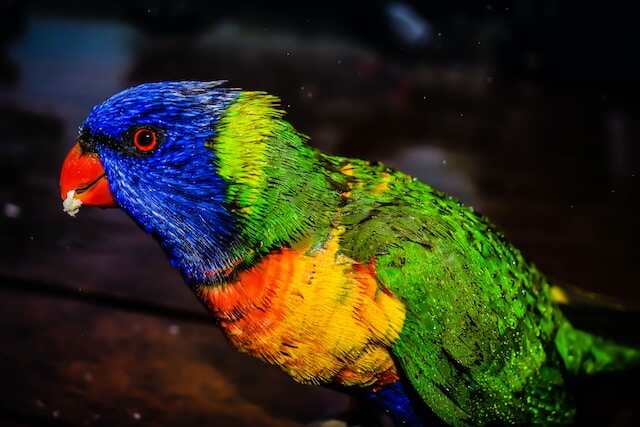
Significance of Red Eyes in Birds
The significance of the red-colored eyes in avian species is a subject of great interest to researchers, as it provides valuable insights into the biological and ecological adaptations required for survival in various environmental conditions.
In birds, the red coloration of the eyes is due to the presence of blood vessels and melanin pigment.
The blood vessels, which are more abundant in the retina, provide oxygen and nutrients to the photoreceptor cells, while melanin pigment helps to absorb stray light and prevent glare.
The red eyes also play a critical role in visual communication between birds.
For instance, in some species, the red coloration of the eyes becomes more intense during courtship and breeding seasons, indicating the reproductive status of the bird.
In other species, the red eyes serve as a warning signal to predators, indicating the bird’s vigilance and readiness to defend itself or its offspring.
Thus, the significance of the red eyes in birds goes beyond mere aesthetics, as it has evolutionary advantages that help birds adapt and survive in their respective habitats.
Frequently Asked Questions
Can red-eyed birds see better in the dark?
Night vision in birds is a fascinating aspect of their visual system that has been studied for decades.
While red eyes in birds may be associated with visual adaptation to low light conditions, there is no evidence that suggests that red-eyed birds have better night vision compared to other birds.
Genetic mutations that cause the overproduction of melanin pigment in the iris can result in red eyes, but this does not necessarily enhance their visual abilities in the dark.
Rather, it is the presence of specialized cells, such as rods and cones, in the retina that contribute to better night vision in birds.
These cells are sensitive to different wavelengths of light, enabling birds to see in low light conditions.
Therefore, the color of their eyes may not directly impact their night vision capabilities.
Do all birds with red eyes have the same shade of red?
Red eyes in birds are not all the same shade. Different shades of red eyes in birds can be attributed to a combination of genetics and environmental factors.
Predatory birds such as eagles and hawks tend to have brighter red eyes, which may be an adaptation to enhance their hunting abilities. In contrast, prey birds such as doves and sparrows have less vibrant red eyes, which may be due to their need for camouflage.
The shade of red eyes in birds is determined by the amount of melanin pigment in the blood vessels of the eye, as well as the reflection of light and rays.
Genetics play a role in determining the amount of melanin pigment, while environmental factors such as diet and exposure to sunlight can also impact the shade of red eyes.
Are there any negative health effects associated with having red eyes in birds?
The presence of red eyes in birds has been a subject of fascination and intrigue for ornithologists and bird enthusiasts alike.
While the pigmentation of the eyes is primarily determined by genetic factors, environmental variables can also play a role.
However, there is no evidence to suggest that red eyes in birds are directly linked to negative health effects.
Some studies have suggested that red eyes may be a marker of disease susceptibility in certain bird species.
Additionally, stress can cause changes in eye color, but it is unclear whether this is a correlation or a causation.
Overall, further research is needed to fully understand the mechanisms behind red eye pigmentation in birds and its potential implications for their health.
Can a bird’s diet affect the color of its eyes?
The color of a bird’s eyes can be influenced by various factors, including dietary impact, genetic factors, and environmental factors.
While genetic factors play a significant role in determining eye color, studies have shown that a bird’s diet can also affect the color of its eyes.
For instance, the presence of certain pigments in a bird’s diet can lead to changes in the color of its eyes.
Additionally, environmental factors such as exposure to sunlight and UV rays can also impact eye color.
However, further research is needed to fully understand the extent of these factors on eye color in birds.
Is it possible for a bird’s eye color to change over time?
Birds with naturally red eyes have always intrigued scientists and bird enthusiasts alike. While it may be tempting to assume that a bird’s eye color is permanent, it is possible for a bird’s eye color to change over time.
However, this change is not arbitrary and can be attributed to various factors.
Genetic predisposition plays a significant role in determining a bird’s eye color, but exceptions exist where environmental factors such as exposure to sunlight and diet can influence eye color.
Additionally, behavioral adaptation in some species can cause a temporary change in eye color to aid in communication or camouflage.
Understanding the factors that contribute to changes in eye color can provide valuable insights into bird behavior and evolution.
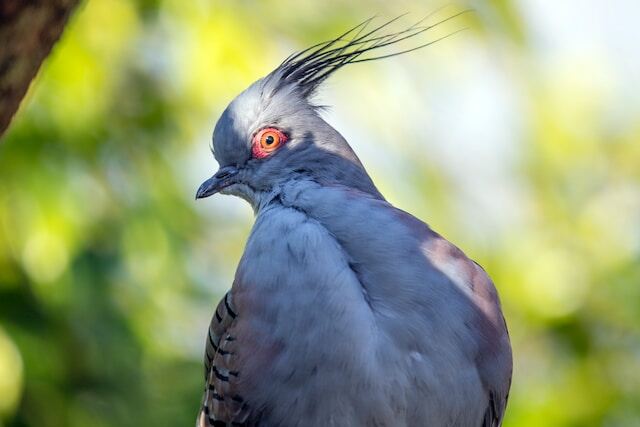
Conclusion
In conclusion, the development of red eyes in birds is a complex process that involves various factors such as the presence or absence of melanin, blood vessels, and light reflection.
While some birds have naturally red eyes, others may develop redness due to environmental factors such as exposure to UV rays or irritants.
Understanding the underlying mechanisms of red eye development in birds can provide insights into their genetic makeup and potential health issues.
Overall, the significance of red eyes in birds is multifaceted and warrants further investigation.
From a scientific perspective, red eyes in birds can provide clues about their evolutionary history, mating preferences, and genetic diversity.
From an aesthetic perspective, red eyes can add to the beauty and uniqueness of these feathered creatures, making them even more fascinating to observe and study.
In the words of John Muir, ‘In every walk with nature one receives far more than he seeks,’ and the study of red eyes in birds is certainly no exception.

